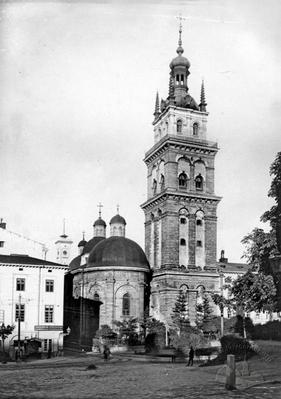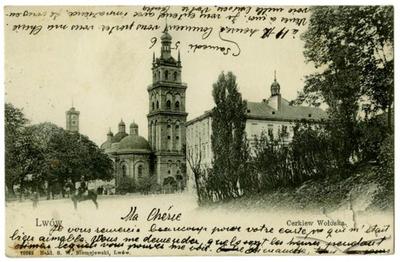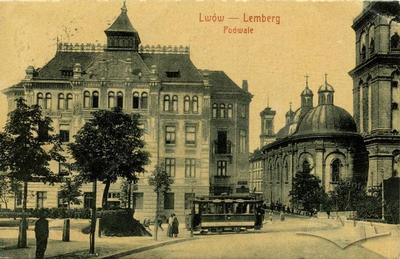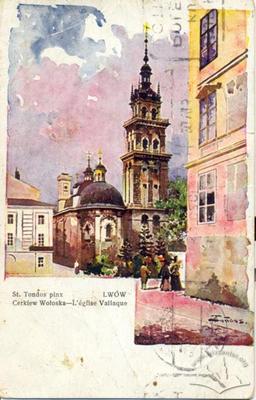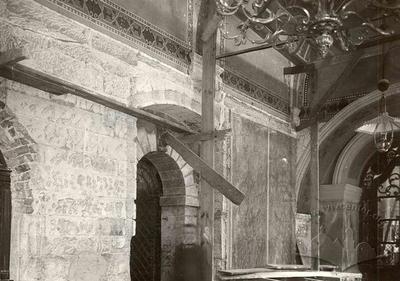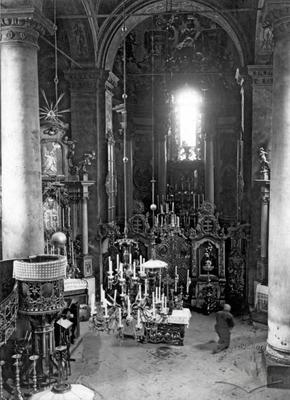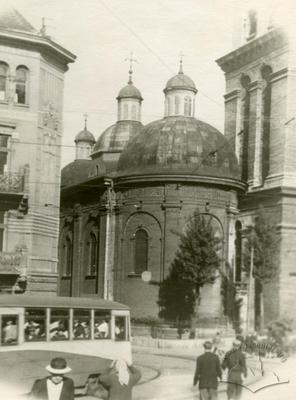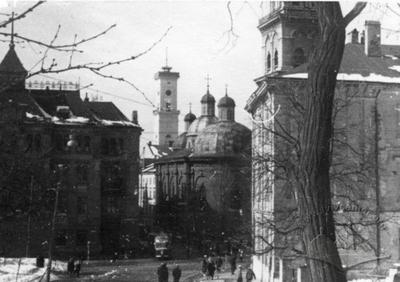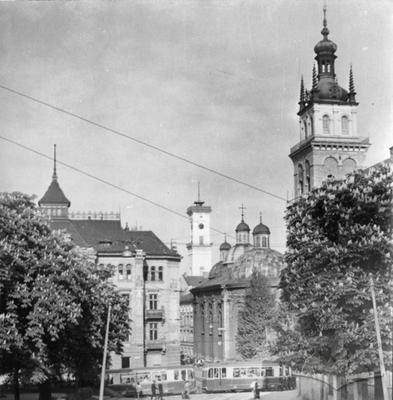Vul. Ruska, 7 – Church of the Assumption ID: 206
The Church of the Assumption of the Mother of God – formerly known as Voloska church is the key element of a wonderful architectural ensemble that includes the church, bell tower (it is built onto the church from the north) and the chapel building in the yard. This is the best Lviv Renaissance monument; its architecture unites the West European Renaissance forms with the tradition of the Eastern Christianity sacral construction. The church stands at the intersection of Pidvalna and Ruska Streets, on the site of an old church of the fifteenth century. In was constructed from 1591 to 1629 (by the architects P. Rymlianyn, V. Kapinos, A. Prykhylnyi) and in 1796 (rebuilt after fire). In the middle of the nineteenth century the church was connected with the Three Prelates Chapel.
Architecture
The church is built from the white hewn stone. It has three sections and is crowned with three cupolas with lanterns. The church has three naves; it is elongated from the west to the east along Ruska Street, and has a mighty semicircular apse standing out in the direction of Pidvalna Street. From the north, from the side of the inner yard, a gallery has been added.
The façades are segmented by Doric pilasters between which the archivolts are located with the semicircular-topped windows in them. The windows are framed with reliefs. The façade is finished off with a developed entablature which encompasses a massive frieze with metopes and triglyphs. The metopes display figure reliefs representing plots from the Holy Scriptures and decorative Rosettas.
The inner space of the church is divided by the columns into three sections covered by the vaults. The coats of arms of the church financial supporters are set up on the vaults of the central cupola. The iconostasis which is the work of M. Filiewicz and Ph. Oledzinski (1773) is the pearl of the building’s interior. Separate icons of the old iconostasis are also exhibited; they were created by the artists Ph. Senkowicz, M. Petrachnowicz and their assistants in the 1630’s. One can also enjoy the stained-glass windows by P. Kholodnyi Senior (1926-1930).
Related buildings and spaces
Sources
- The entry was developed within the project "Galiciana", 2001-2002
Citation
Ihor Zhuk. "Vul. Ruska, 7 – Church of the Assumption". Lviv Interactive (Center for Urban History 2013). URL: https://lia.lvivcenter.org/en/objects/assumption-church/














